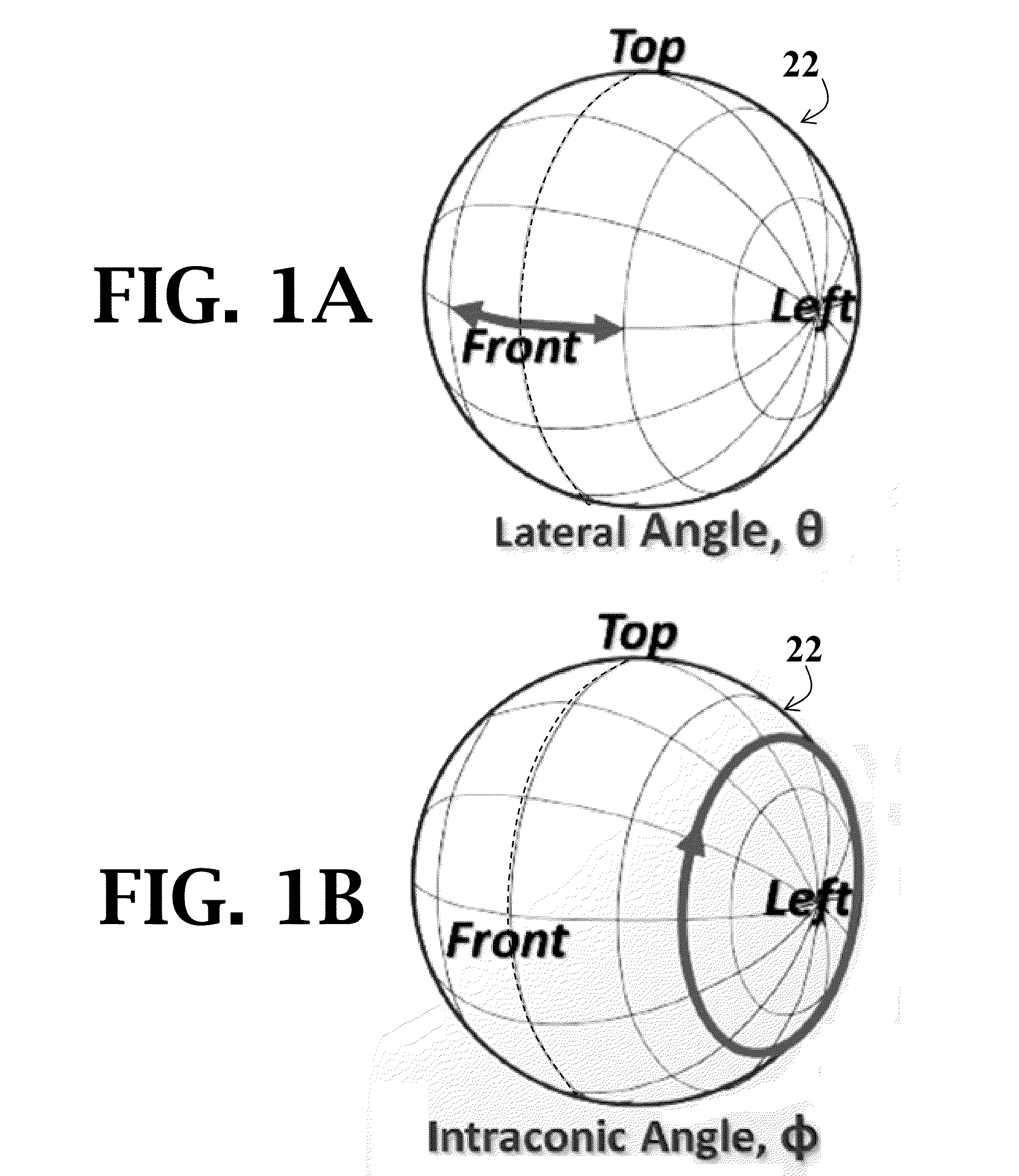Efficient personalization of head-related transfer functions for improved virtual spatial audio
a transfer function and virtual space technology, applied in the field of virtual space audio systems, can solve the problems of large amount of mislocalization, large amount of time and expensive equipment in the hrtf measurement process, and use of cost-prohibitive for many commercial applications
- Summary
- Abstract
- Description
- Claims
- Application Information
AI Technical Summary
Benefits of technology
Problems solved by technology
Method used
Image
Examples
example 1
[0062]s-HTRFs for listeners were recorded using the Auditory Localization Facility (“ALF”) of the Air Force Research Labs in Dayton, Ohio (illustrated in FIG. 5), which has been shown to produce HRTFs which maintain the localization abilities of human subjects with free field stimuli.
[0063]For each s-HRTF, a test stimulus is played from each of the 277 loudspeakers located at vertices of the sphere. The test stimulus consisted of a train of seven periodic chirp signals each swept from 200 Hz to 15 kHz in the span of 2048 samples at a 44.1 kHz sampling rate. The 325-ms chirp train was prefiltered to remove any differences in the frequency response between speakers and was presented to each listener. Binaural recordings were made of each stimulus.
[0064]Before the onset of each stimulus presentation, the position of the listener's head was recorded and, later, used to calculate a head-relative location for storage.
[0065]Raw s-HRTFs were calculated by averaging the response of the five ...
example 2
[0069]Generation of a database of lateral s-HRTF was performed by acquiring s-HRTFs in accordance with the method of Example 1 for 44 listeners. Estimation of coefficients by establishing initial values for hyperparameters, cSec and RSec according to embodiments of the present invention was completed. In that regard, the Bayesian technique of Example 1 was used to estimate the set of coefficients of the 6th order spherical harmonic representation. An Expectation-Maximization algorithm for a 6th-order SH representation.
[0070]FIG. 11 illustrates three estimated subject HRTFs (one per row) taken along the median plane with a decreasing number of spatial measurements used (indicated by column headings). The subject HRTFs begin to lose individuality and become more similar to an average HRTF (zero measurements) as the number of spatial samples is reduced. FIG. 9 further illustrates an increased noisy characteristic of the estimated subject HRTFs when only a few measurements are used, whi...
example 3
[0071]Perceptual evaluations were conducted in the ALF, described above in Example 1, wherein each vertex of the sphere contains a loudspeaker (Bose Acoustimass, Bose Corp., Framingham, Mass.) and a cluster of four LEDs. The ALF included a 6-DOF tracking system (Intersense IS900, Thales Visionix, Inc., Billerica, Mass.) configured to simultaneously track the listener's head position and the position of a small hand-held pointing device. The system is such that real-time visual feedback can be given to the listener about the orientation of the wand or the listener's head by lighting up the LED cluster which corresponds most closely to the orientation direction. During HRTF collection, listeners were asked to stand in the center of the sphere with their head oriented toward a designated speaker location. Before each set of test stimuli were presented, the position and orientation of the listener's head was recorded and the corresponding location modified to correspond to its position ...
PUM
 Login to View More
Login to View More Abstract
Description
Claims
Application Information
 Login to View More
Login to View More - R&D
- Intellectual Property
- Life Sciences
- Materials
- Tech Scout
- Unparalleled Data Quality
- Higher Quality Content
- 60% Fewer Hallucinations
Browse by: Latest US Patents, China's latest patents, Technical Efficacy Thesaurus, Application Domain, Technology Topic, Popular Technical Reports.
© 2025 PatSnap. All rights reserved.Legal|Privacy policy|Modern Slavery Act Transparency Statement|Sitemap|About US| Contact US: help@patsnap.com



